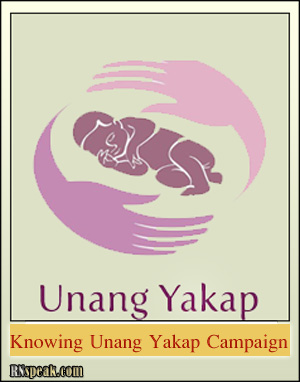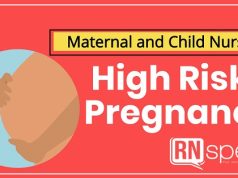 What is Unang Yakap Campaign?
What is Unang Yakap Campaign?
It is diligently the adoption of the new policy standards in newborn care following the implementation of Health Reforms for Rapid Reduction in Maternal and Newborn Mortality. It is to counter effect the Philippine’s steady figures in neonatal mortality for the past 10 to 20 years showing a non- existent of difference despite previous efforts in improving health status indicators.
The composition of Unang Yakap Campaign involves the correction of previous insufficient interventions in newborn care through evidenced based protocols; which was mandated under the Administrative Order (AO) 2009-0025. The AO specified the details of provision of care during birth until the first 6 hours of life; aiming to guide health care providers and to define the role of public health units in the implementation of the new protocol.
The ENC assumed by Unang Yakap Campaign utilizes evidenced based interventions which follow:
a. A systematic sequence of actions;
b. Organized to prevent interruption of timely- bound care;
c. And to fill in gaps for the package of bundled interventions in a guideline format.
Guideline of Unang Yakap Campaign
1. Step-by-step timely bound interventions
- Immediate drying to provide warmth and prevent hypothermia
- Uninterrupted skin-to-skin contact which is essential for mother and child bonding and in reducing the risk for the child for sepsis and hypoglycaemia
- Properly timed/ delayed appropriate cord clumping and cutting; which is believed to avoid anemia in term newborns and intraventricular hemorrhage in preterms
- Non-separation of mother and newborn through early facilitation of breastfeeding and rooming- in.
- Proper eye care which is done to prevent the newborn from having ophthalmia neonatorum.
2. Non- immediate interventions – this includes the appropriate time in doing other interventions like Vitamin K, Hepatitis B and BCG injections, overall assessment of child, and cord care.
3. Newborn resuscitation – this is with regards to specific guidelines when and how to do neonatal resuscitation.
4. Additional care for a small baby– concerned about SGA and how to utilize Kangaroo Mother Care.
5. Unnecessary procedures – this corresponds to frequent suctioning which is actually unnecessary especially if the newborn cries or breathes immediately after birth; early bathing which is not advised by the WHO since it makes the child risk for hypothermia and other health consequences; foot printing, which does not provide ideal identification purpose for the child; giving of milk formulas, sugar water and other prelacteals through the use of bottles or pacifiers- which could only lead to nipple confusion and delay in breastfeeding; and the use of alcohol or any medicine in cord care and bandaging the abdomen – which makes the child prone to infections.
6. Discharge instructions – this includes the necessary discharge plan of care for both the mother and the newborn, corresponding to their follow up schedules, health teachings on danger signs and when to bring the newborn to the facility, and in complying on newborn screening.
7. Implementing mechanism – that delineates the roles and responsibilities of various sectors in the health care delivery system.
Training Video courtesy of unangyakap.doh.gov.ph
Unang Yakap Campaign is only one of the Department of Health’s strategies in enhancing health indicators and in saving lives of newborns. They are emphasizing that we, health professionals, embrace this new guidelines in ENC; in partnership with various health sectors and agencies, together with the families in the community to make us achieve the Millennium Development Goal number 4.
References
- Office of the Secretary, Department of Health. (December 1, 2009). Administrative Order 2009-0025: Adopting New Policies and Protocol on Essential Newborn Care. Retrieved last May 28, 2012 from www.doh.gov.ph







